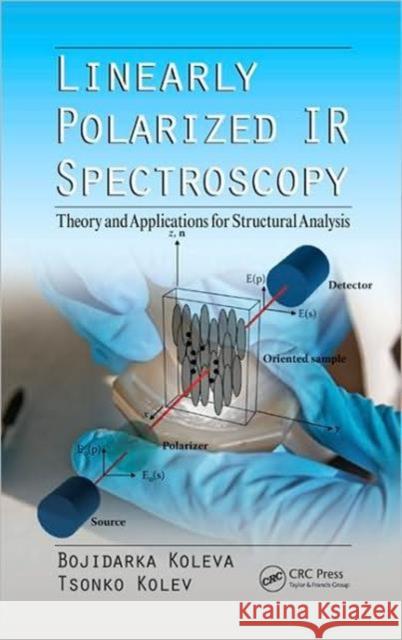Linearly Polarized IR Spectroscopy: Theory and Applications for Structural Analysis » książka
Linearly Polarized IR Spectroscopy: Theory and Applications for Structural Analysis
ISBN-13: 9781439825594 / Angielski / Twarda / 2011 / 240 str.
Linearly Polarized IR Spectroscopy: Theory and Applications for Structural Analysis
ISBN-13: 9781439825594 / Angielski / Twarda / 2011 / 240 str.
(netto: 944,54 VAT: 5%)
Najniższa cena z 30 dni: 957,11
ok. 22 dni roboczych
Bez gwarancji dostawy przed świętami
Darmowa dostawa!
A technique that is useful in the study of pharmaceutical products and biological molecules, polarization IR spectroscopy has undergone continuous development since it first emerged almost 100 years ago. Capturing the state of the science as it exists today, Linearly Polarized IR Spectroscopy: Theory and Applications for Structural Analysis demonstrates how the technique can be properly utilized to obtain important information about the structure and spectral properties of oriented compounds. The book starts with the theoretical basis of linear-dichroic infrared (IR-LD) spectroscopy and then moves on to examine the background of the orientation method of colloid suspensions in a nematic host. It explores the orientation procedure itself, experimental design, and mathematical tools for the interpretation of the IR spectroscopic patterns. Next, the authors describe the structural elucidation of inorganic and organic compounds and glasses. Finally, they discuss applications in pharmaceutical analysis and the chemistry of dyes. Filled with more than 140 illustrations along with a color insert, the book explains both the scope of the polarized IR spectroscopy method as well as its limitations. A powerful source of information not only for specialists in IR spectroscopy, but also for those working in the field of structural analysis, this volume moves the field closer to developing an inherently classical method for the structural characterization of compounds.
Reviewing theory but focusing on practice, this book introduces linearly-polarized IR spectroscopy as a method of molecular structural analysis, a technique that is useful in the study of pharmaceutical products and biological molecules. Examples demonstrate both the advantages and limitations of this technique. The text explains the possible applications of this new orientation method for the structural characterization of various chemicals. More specifically, it demonstrates how to obtain important information about the structure and spectral properties of oriented compounds.











